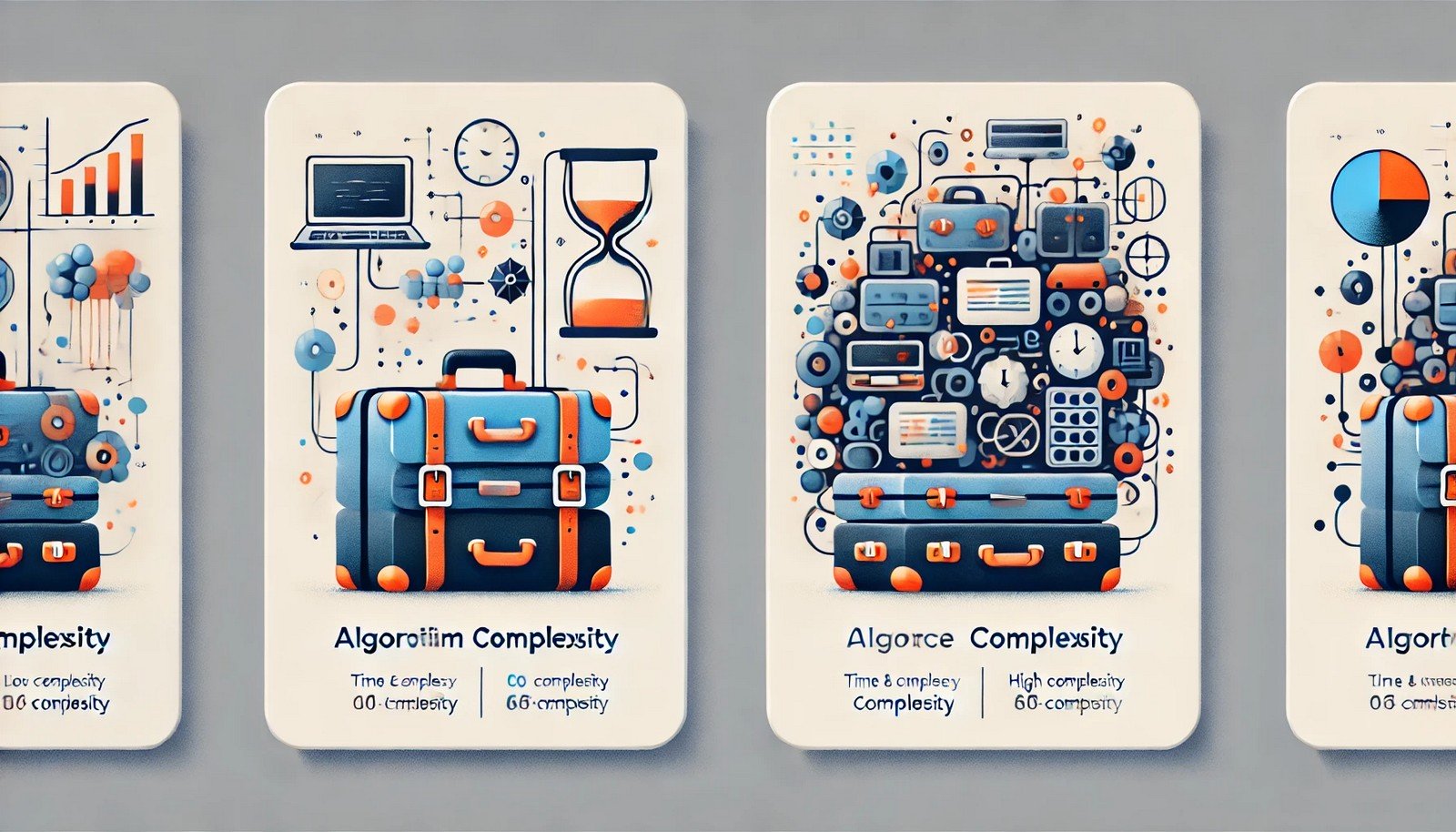Algorithm Complexity
 (Representational Image | Source: Dall-E)
(Representational Image | Source: Dall-E)
Quick Navigation:
- Algorithm Complexity Definition
- Algorithm Complexity Explained Easy
- Algorithm Complexity Origin
- Algorithm Complexity Etymology
- Algorithm Complexity Usage Trends
- Algorithm Complexity Usage
- Algorithm Complexity Examples in Context
- Algorithm Complexity FAQ
- Algorithm Complexity Related Words
Algorithm Complexity Definition
Algorithm complexity refers to the computational cost of executing an algorithm, primarily concerning time and space usage. Time complexity indicates how the execution time of an algorithm increases with the size of the input, while space complexity relates to the memory required. These complexities are often expressed using Big-O notation, such as O(n), O(log n), and O(n²), which help in evaluating and comparing algorithm performance.
Algorithm Complexity Explained Easy
Think of algorithm complexity like packing your bag for a trip. If you only take a few things, packing is quick (low time complexity) and your bag stays light (low space complexity). But if you try to pack everything you own, it will take forever and require multiple bags—high time and space complexity!
Algorithm Complexity Origin
The study of algorithm complexity emerged in the mid-20th century as computer scientists sought ways to analyze and improve algorithm performance. Notable milestones include the development of complexity classes like P and NP in computational theory.
Algorithm Complexity Etymology
The term “complexity” originates from the Latin word “complexus,” meaning “composed of interconnected parts.” In computing, it reflects the intricate nature of algorithm analysis.
Algorithm Complexity Usage Trends
Over the years, algorithm complexity has gained immense importance in software development and academic research. With the growing demand for scalable and efficient applications, developers increasingly focus on optimizing time and space complexities.
Algorithm Complexity Usage
- Formal/Technical Tagging:
- Computer Science
- Software Engineering
- Data Structures and Algorithms - Typical Collocations:
- "algorithm complexity analysis"
- "Big-O notation"
- "optimize algorithm complexity"
- "space-time trade-off"
Algorithm Complexity Examples in Context
- Sorting algorithms like bubble sort and quicksort have different time complexities (O(n²) and O(n log n), respectively).
- Space complexity is crucial in embedded systems, where memory resources are limited.
- Machine learning models often balance algorithm complexity to achieve faster prediction times.
Algorithm Complexity FAQ
- What is algorithm complexity?
Algorithm complexity refers to how efficiently an algorithm uses time and space resources as input size grows. - Why is time complexity important?
It helps predict the execution time for large input sizes, crucial for performance optimization. - What is Big-O notation?
Big-O notation describes the worst-case scenario of an algorithm’s growth rate. - What are common time complexities?
Common ones include O(1), O(log n), O(n), O(n log n), and O(n²). - What is space complexity?
Space complexity measures the amount of memory an algorithm needs to execute. - What is the difference between time and space complexity?
Time complexity focuses on execution time, while space complexity looks at memory usage. - What is the best complexity for an algorithm?
O(1) (constant time) is the best, as execution time does not increase with input size. - Can we always achieve low complexity?
No, some problems inherently require high complexity. - How is algorithm complexity related to scalability?
Efficient complexity ensures an algorithm can handle large-scale data without performance issues. - What tools help in measuring algorithm complexity?
Profilers, analyzers, and benchmarking tools are commonly used.
Algorithm Complexity Related Words
- Categories/Topics:
- Computational Theory
- Big-O Analysis
- Optimization
Did you know?
In 1971, the concept of NP-completeness was introduced, revolutionizing the field of computational theory. This breakthrough helped identify problems that are solvable in theory but impractical due to their high algorithm complexity.
PicDictionary.com is an online dictionary in pictures. If you have questions or suggestions, please reach out to us on WhatsApp or Twitter.Authors | Arjun Vishnu | @ArjunAndVishnu

I am Vishnu. I like AI, Linux, Single Board Computers, and Cloud Computing. I create the web & video content, and I also write for popular websites.
My younger brother, Arjun handles image & video editing. Together, we run a YouTube Channel that's focused on reviewing gadgets and explaining technology.



Comments powered by CComment